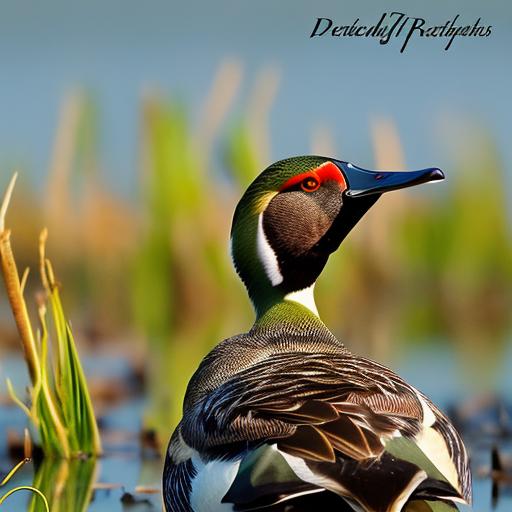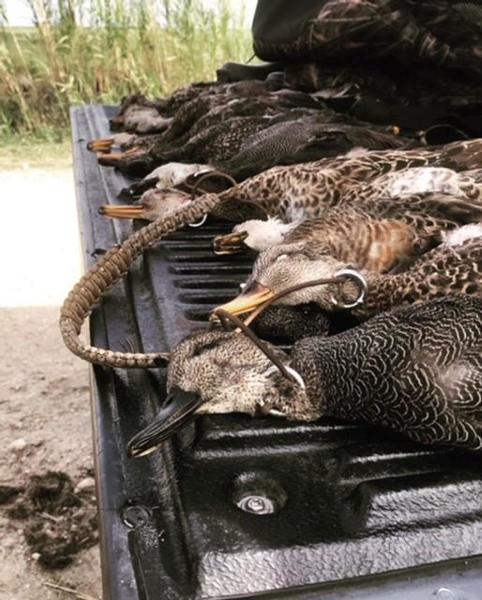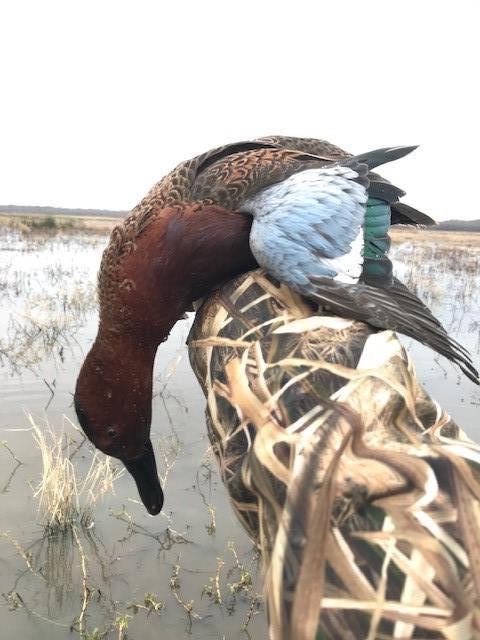Your cart is currently empty!

Want More Ducks? Top Marsh Duck Hunting Tips to Boost Your Bag Limit!

Table of Contents
Introduction
Hey there fellow hunters! If you’ve ever set foot in the marshlands with the hope of bagging a few ducks, you know it’s a whole different ball game out there. The marshes, with their unique terrain and challenges, require a special set of skills. But don’t fret; whether you’re a seasoned hunter or just dipping your toes into the world of waterfowl, I’ve got some marsh duck hunting tips that’ll give you the edge. Over the years, I’ve spent countless hours in the marsh, learning the ins and outs of the game. And let me tell you, understanding the nuances of marsh duck hunting can make all the difference between a successful hunt and going home empty-handed. So, if you’re looking to boost your bag limit and make the most of your time in the marsh, you’re in the right place. Stick around as we dive deep into the world of marsh duck hunting tips that have been tried, tested, and perfected over many hunting seasons.
Understanding Marsh Duck Behavior
Ah, the elusive marsh duck. If there’s one thing I’ve learned from my years in the marshlands, it’s that understanding your quarry is half the battle. Let’s dive into the fascinating world of marsh duck behavior, shall we?
The Dance of Duck Patterns and Behaviors
First and foremost, it’s crucial to get a grasp on the typical patterns and behaviors of ducks in the marsh. These birds aren’t just wandering aimlessly; they have routines, habits, and preferences. For instance, during feeding times, you’ll often find them dabbling near the water’s edge or tipping forward to feed on underwater vegetation. Recognizing these patterns can give you a significant advantage in predicting their next move.
Weather, Time of Day, and the Seasons
Now, let’s talk about the trifecta: weather, time of day, and season. These three factors play a massive role in duck movement. On overcast days, ducks tend to be more active, making it a prime time for hunting. Early mornings and late afternoons? That’s when they’re most likely to be on the move, searching for food or a safe spot to rest. And as for seasons, migration patterns mean that certain times of the year will see a surge in duck activity. Being aware of these factors and adjusting your hunting strategy accordingly can make a world of difference.
The Symphony of Duck Vocalizations
Lastly, let’s touch on the music of the marsh: duck vocalizations. If you’ve ever sat quietly in a blind, you’ve likely heard the various quacks, whistles, and grunts of ducks communicating with each other. These sounds aren’t just noise; they’re a window into the world of duck behavior. A high-pitched quack might signal an alert, while a series of softer quacks could indicate a duck calling its mate. By observing and interpreting these vocalizations, you can gain insights into what the ducks are up to, whether they’re feeling at ease or sensing danger.
In the grand scheme of things, understanding marsh duck behavior is a game-changer. It’s not just about waiting for a duck to fly into your line of sight; it’s about anticipating their moves, being one step ahead, and truly immersing yourself in the art of the hunt. So, the next time you’re out in the marsh, take a moment to observe, listen, and learn. You might just find that these insights are the key to your most successful hunt yet.

Essential Gear for the Marsh Hunter
Gear up, folks! If there’s one thing that can make or break your marsh duck hunting experience, it’s having the right equipment. Trust me, I’ve learned this the hard way. Let’s dive into the must-have gear that every marsh hunter should consider.
Quality Waders and Waterproof Gear: Your Best Friends
Ever stepped into a marsh with subpar waders? I have, and let’s just say it’s a soggy experience I’d rather not repeat. Investing in quality waders is non-negotiable. Not only do they keep you dry, but they also provide the mobility and comfort needed for those long hours in the marsh. And while we’re on the topic of staying dry, don’t skimp on waterproof gear. From jackets to gloves, ensuring you’re shielded from the elements will keep you focused on the hunt and not on how wet you’re getting.
The Art of the Duck Call: Marsh Edition
Now, onto one of my favorite topics: duck calls. In the marsh, not just any call will do. You need something that can cut through the dense air and mimic the unique sounds of marsh ducks. For this environment, I’d recommend a double-reed call. It’s versatile, easy for beginners, and produces a rich, ducky sound that’s perfect for the marsh. Of course, mastering the call takes practice, but with the right tool in hand, you’re off to a great start.
Decoys: More Than Just Duck Doppelgängers
Ah, decoys. These unsung heroes of the hunting world play a pivotal role in luring in those wary ducks. But it’s not just about tossing a few fake birds into the water and hoping for the best. First, consider the types of ducks you’re targeting and choose decoys that resemble them. Mallards are a popular choice, but don’t be afraid to mix in a few pintails or teal for variety.
Placement is key. Set up your decoys in a natural-looking pattern, perhaps mimicking a feeding group or a landing zone. And don’t forget movement! A little ripple or motion can make your decoy spread come alive. Consider investing in a jerk string or a motorized decoy to add that touch of realism.
In the end, the marsh is a challenging yet rewarding environment for duck hunters. With the right gear in tow, you’re setting yourself up for success. Remember, it’s not just about having the equipment; it’s about knowing how to use it.
Scouting and Choosing the Perfect Spot
Alright, fellow hunters, let’s talk strategy. You’ve got the gear, you’ve studied the ducks, but where do you set up shop? Picking the right spot in the marsh can be the difference between a day filled with action and, well, a day filled with bird-watching. Let’s dive into the art of scouting and staking out that prime hunting real estate.
The Two Phases of Scouting: Pre-Season and In-Season
First things first: scouting isn’t a one-time deal. It’s an ongoing process, and it starts well before the hunting season kicks off. Pre-season scouting gives you a lay of the land, helping you identify potential hotspots and get a feel for duck movement patterns. It’s your recon mission, a chance to gather intel without the pressure of the hunt.
But don’t hang up your binoculars once the season starts. In-season scouting is just as crucial. Ducks are creatures of habit, but they’re also adaptable. Their patterns can shift based on various factors, from weather changes to hunting pressure. Regular scouting trips during the season help you stay ahead of the game and adapt to the ducks’ ever-changing routines.
High-Traffic Areas: The Duck Highways of the Marsh
Now, let’s talk about those coveted high-traffic areas. These are the spots ducks frequent, whether for feeding, resting, or socializing. But why do ducks prefer certain areas over others? It could be the abundance of food, the safety from predators, or simply the right water depth. Observing and understanding these preferences can give you a significant edge. Look for signs of feeding, like upturned vegetation, or areas with ample cover that provide a safe haven for ducks.
Mastering the Art of Concealment: Natural vs. Pop-Up Blinds
Alright, you’ve found your spot. Now, how do you stay hidden? Ducks have keen eyesight, and the last thing you want is to stick out like a sore thumb. Enter the world of blinds.
Natural blinds, made from the vegetation and materials around you, are a fantastic option. They blend seamlessly into the environment and can be customized to your spot. Think cattails, reeds, and grasses. The key is to ensure you’re fully concealed, with just enough of a gap to see and shoot.
On the other hand, pop-up blinds offer convenience and portability. They’re quick to set up and can be moved easily if you decide to change spots. Just make sure it’s well-camouflaged and anchored securely.
Shooting Techniques in Marsh Terrains
Alright, fellow hunters, let’s get down to the nitty-gritty: shooting techniques. The marsh presents its own set of challenges, but with the right approach, you can turn these challenges into opportunities. Let’s dive into the world of shooting in marsh terrains and how to make every shot count.
Marshy Challenges and How to Rise Above
Marshes, with their unpredictable terrains and ever-changing conditions, can throw a curveball at even the most seasoned hunters. You’ve got shifting grounds, varying water depths, and often, unpredictable winds. All these factors can affect your stability and, consequently, your shot. So, how do you overcome this?
First, always be aware of your footing. In marshy conditions, it’s easy to misstep or sink unexpectedly. Use a walking stick or wading staff to test the ground before you move. This not only ensures stability but also helps you position yourself for the perfect shot.
The Power of Versatile Shooting Positions
Now, let’s talk shooting positions. In the marsh, you won’t always have the luxury of your favorite shooting stance. Sometimes, you might be waist-deep in water; other times, you might be nestled among tall reeds. This is where versatility comes into play.
Practice various shooting positions, from standing to kneeling to prone. Familiarize yourself with the transitions between these positions, so you can adapt on the fly. The more comfortable you are in different stances, the better prepared you’ll be for whatever the marsh throws your way.

Leading the Target and Knowing Your Range
Ducks, especially in the marsh, are masters of evasive maneuvers. They can change direction in a heartbeat, making them challenging targets. This is where leading comes into play. Instead of aiming directly at the duck, anticipate its path and aim slightly ahead, giving your shot time to intersect with the bird’s trajectory.
And let’s not forget about range. Every gun and ammunition combo has an effective range, the distance within which you can make a clean, ethical shot. Familiarize yourself with your equipment’s effective range and resist the temptation to take shots at ducks that are too far away. It’s not just about hitting the target; it’s about ensuring a humane harvest.
Related Questions
How does marsh hunting differ from open water or field hunting?
Ah, great question! Marsh hunting is its own unique beast. Unlike open water or field hunting, marshes present a mosaic of terrains – from muddy grounds to shallow waters dotted with vegetation. This means you’re dealing with unpredictable footing and a variety of hiding spots for ducks. Plus, the dense reeds and cattails in marshes offer both challenges and opportunities for concealment that you won’t typically find in open water or fields.
What are the best times of day for marsh duck hunting?
From my years in the marsh, I’ve found that the early bird truly does get the duck! Dawn, just as the world is waking up, is prime time. Ducks are often on the move, searching for breakfast. Late afternoon, leading up to dusk, is another golden window. The birds are settling down for the evening and are more active. So, set that alarm and savor the sunset; these are your best shots at success.
How can hunters ensure they’re following ethical hunting practices in marsh environments?
Ethical hunting is close to my heart. In marshes, it starts with respecting the habitat. Stick to established paths to avoid trampling sensitive vegetation. When it comes to shooting, know your effective range and aim for clean, humane shots. Over-shooting or taking speculative shots can lead to wounded ducks that suffer. Lastly, retrieve every bird you down. It’s not just about the hunt; it’s about honoring the game and the environment we love.
Summary
Well, there you have it, folks! A deep dive into the world of marsh duck hunting. Whether you’re a newbie looking for a solid start or a seasoned pro aiming to refine your skills, these marsh duck hunting tips are bound to come in handy. Remember, the marshes are a unique hunting ground, and understanding their intricacies is the key to success. It’s not just about the right gear or the perfect spot; it’s about adapting, learning, and respecting the environment. Every trip to the marsh is a learning experience, and with these tips in your arsenal, you’re well on your way to becoming a master of the marsh. So, gear up, stay patient, and happy hunting! Remember, it’s not just about the number of ducks you bag, but the memories and experiences you create along the way.

Herb has been a longtime lover of the outdoors. Whether it be hunting, camping, fishing or just getting outside to reset. Proud father and animal lover. Bourbon anyone?

by
Tags:
Comments

Categories
- Big Game Hunting (301)
- Deer (202)
- Reviews (3)
- Shooting (16)
- Slingshot (1)
- Small Game Hunting (42)
- Upland Hunting (126)
- Waterfowl Hunting (3)





Leave a Reply